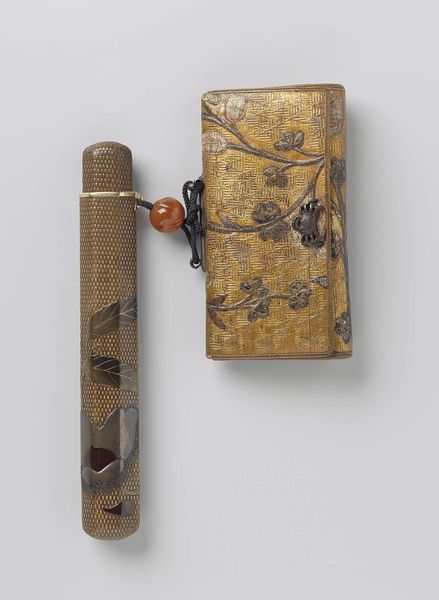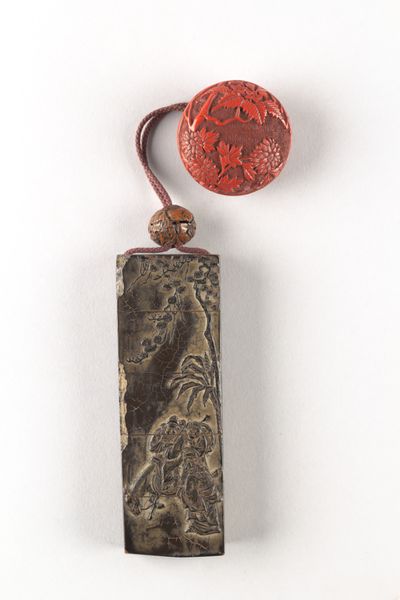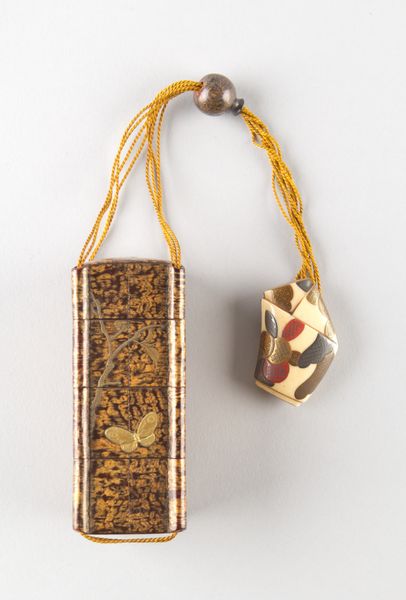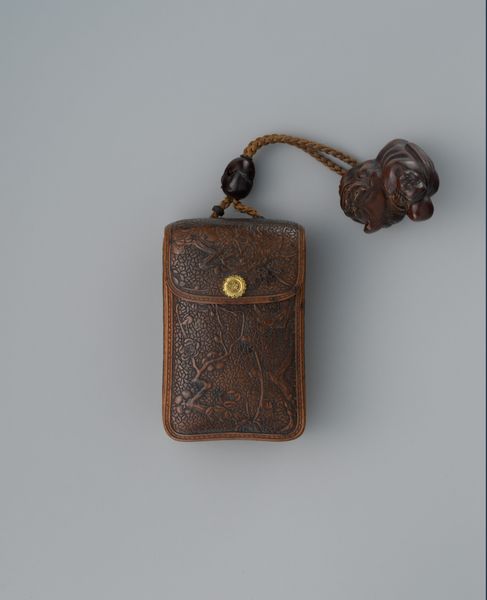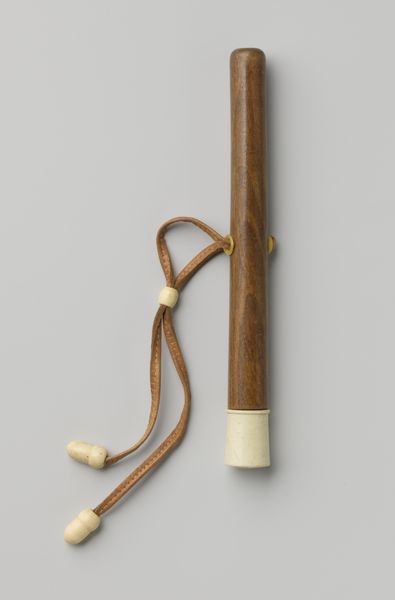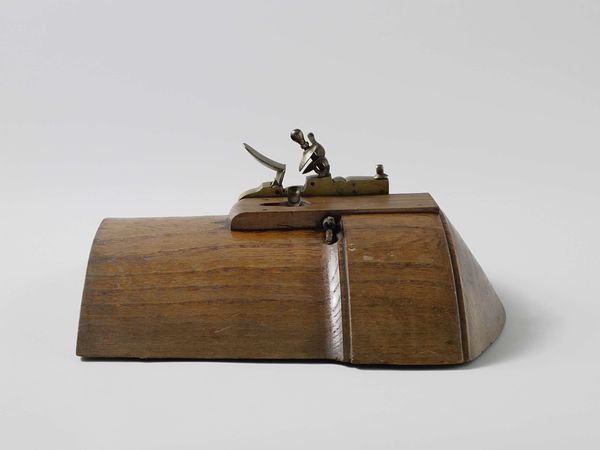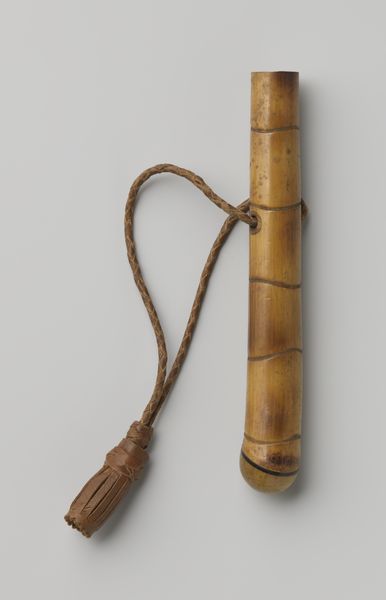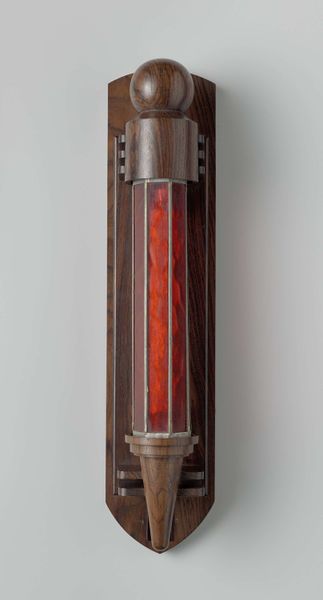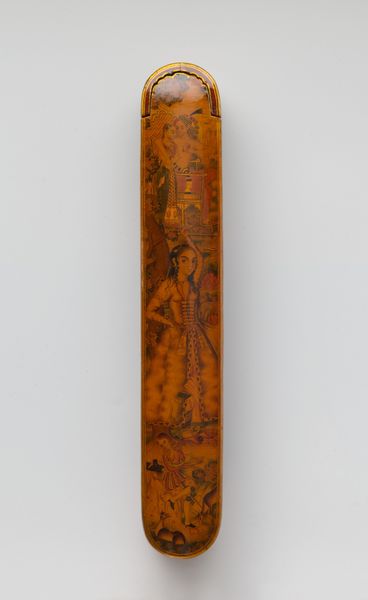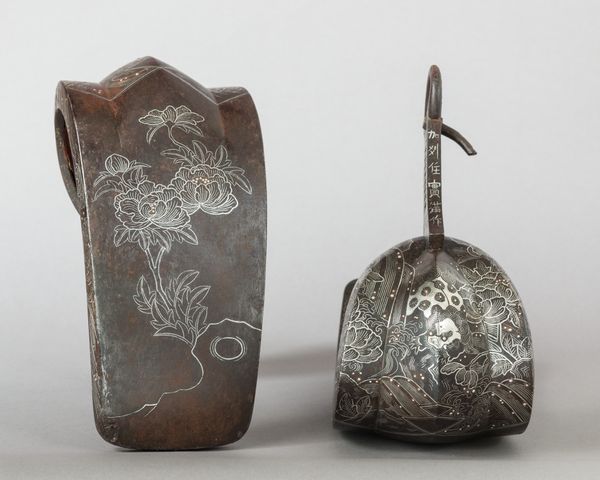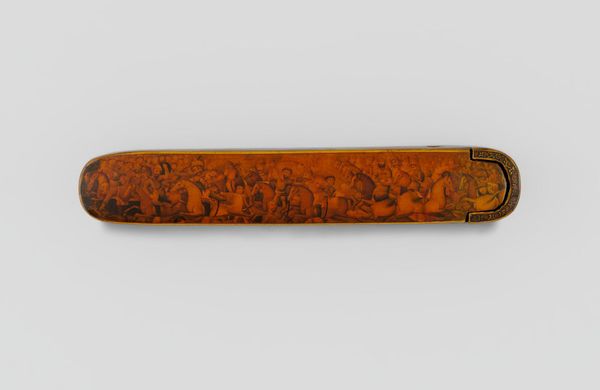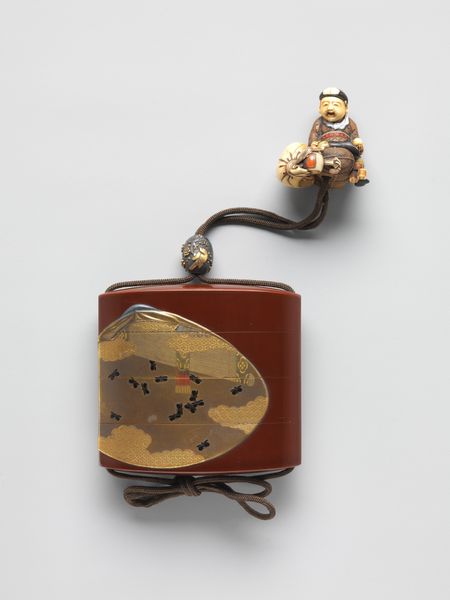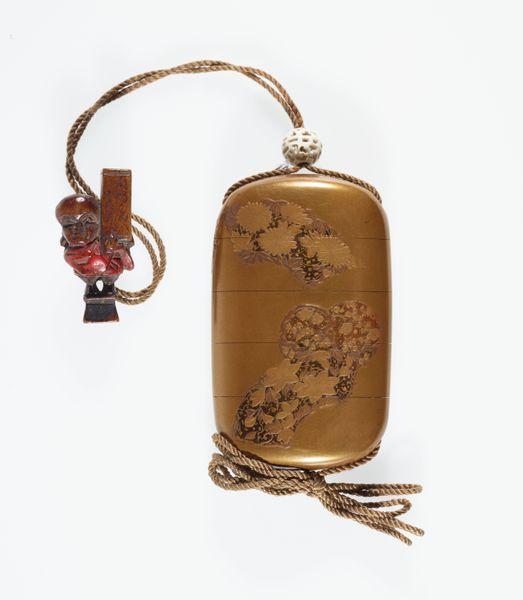
Pipe case depicting geese amid reeds with tobacco pouch c. 1890s
0:00
0:00
Dimensions: 9 3/16 × 5 1/8 × 1 3/16 in. (23.3 × 13 × 3 cm)
Copyright: Public Domain
Editor: Here we have a pipe case with a tobacco pouch by Nohara Teimei, created around the 1890s. What strikes me is the contrast between the sleek case adorned with geese and reeds, and the almost marbled texture of the pouch. What do you make of this pairing? Curator: Well, it’s crucial to remember that objects like these weren't just utilitarian; they were potent markers of social identity and status. Consider the time this piece was made - the late 19th century in Japan. There's an intentional nod to ukiyo-e tradition with the serene geese motif, referencing nature and refined taste. How would that image be consumed by its intended audience? Editor: I guess owning something so carefully crafted elevated smoking beyond a simple habit. It became a ritual steeped in artistry. Curator: Precisely. Tobacco was introduced by Europeans but incorporated into the Japanese society and hierarchy, eventually taking on a more nationalistic and sophisticated tone by the Meiji era. Smoking, through objects like these, then became something imbued with cultural capital. Even the choice of ceramics speaks to broader historical currents. How would inexpensive or mass-produced alternatives shift this understanding? Editor: Right, because ceramics signaled a certain level of wealth and appreciation for craftsmanship. So, this pairing… it’s not just aesthetically pleasing. It communicates specific social and cultural values of the time. Curator: Exactly. These objects operated within a system of visual cues recognizable to the contemporary viewer, creating a language that expressed who they were or aspired to be within the social hierarchy. We're left contemplating art's public role beyond mere representation. Editor: I'm starting to see how this unassuming smoking set offers such rich insights. I'll never look at decorative art the same way! Curator: And understanding this period’s historical backdrop gives insight into Japanese arts during a time of significant change, demonstrating that these types of creations aren’t accidents or trends. These types of objects were calculated.
Comments
No comments
Be the first to comment and join the conversation on the ultimate creative platform.
